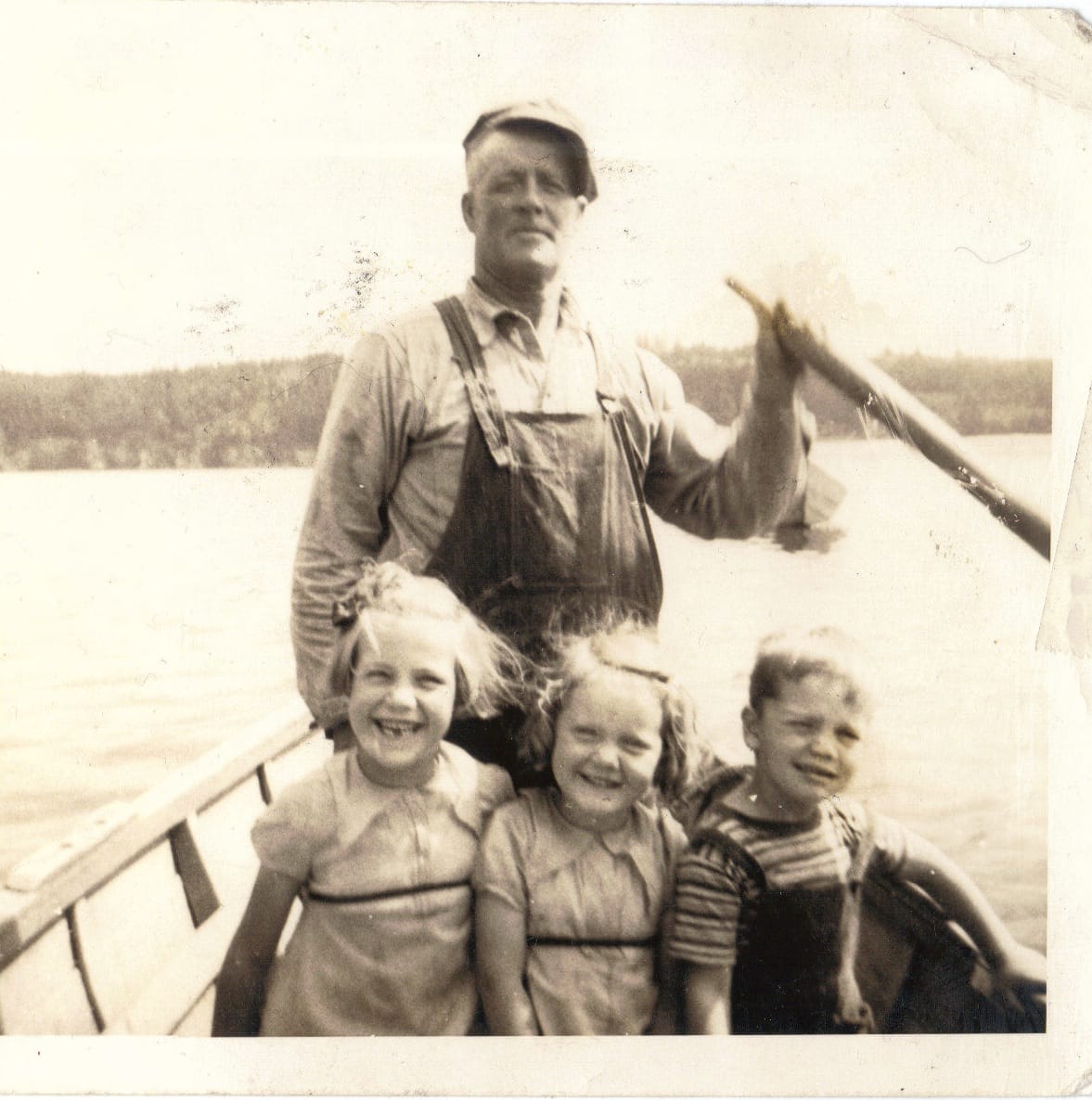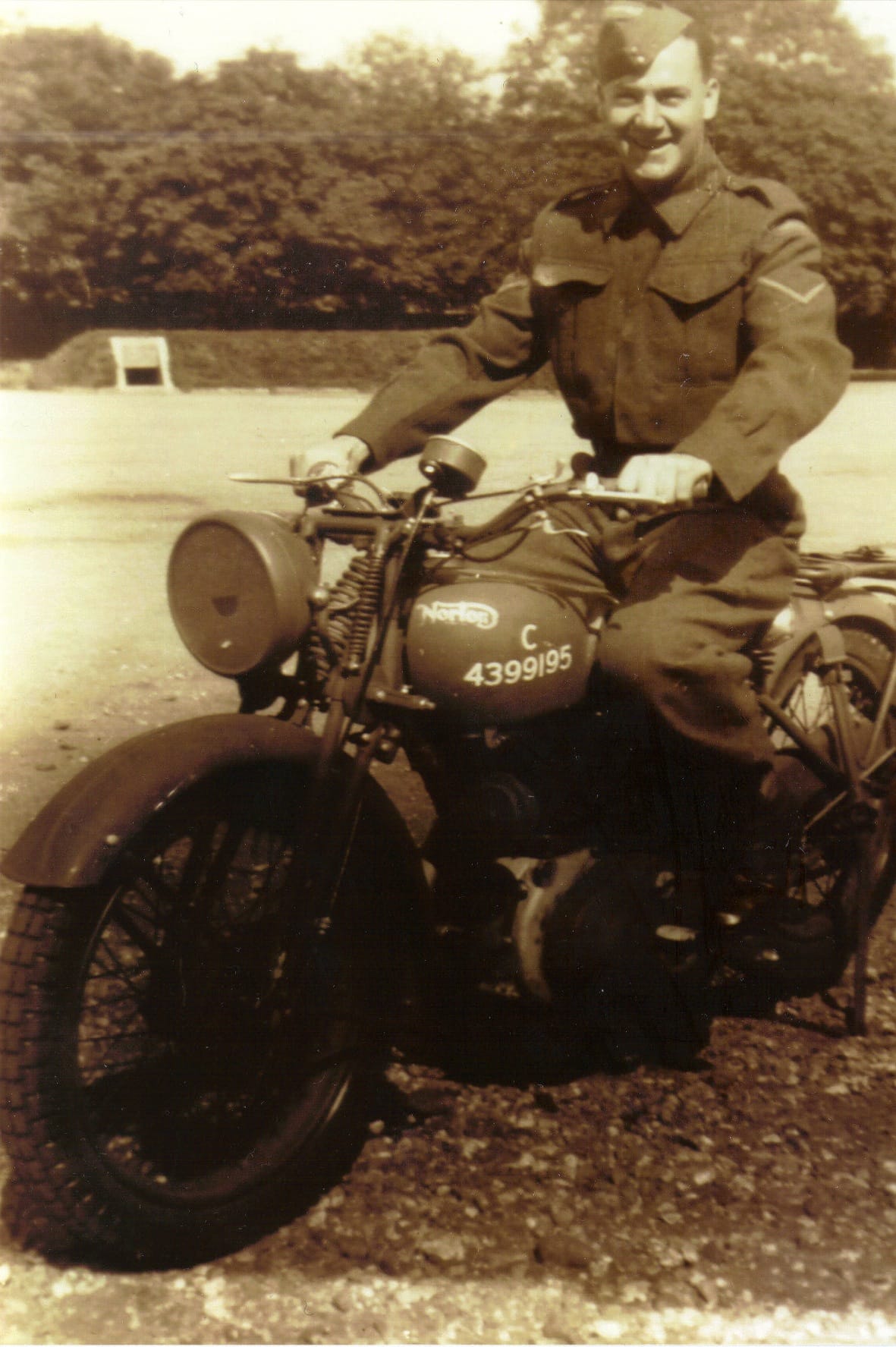Using AI to give distant memories a new lease on life

The photo on the top of this post came from the photo album of my late grandmother Kate. It is a picture of her father-in-law, my great-grandfather Bruce, rowing a boat with three kids in it. One of those kids is her son, my father. The other kids are our cousins, Myrna and Barb.
Kate died many years ago. Her Father-in Law, Bruce, died many many years before that. I'm told I met him, when I was a small child, but I have no recollection of the event. To me he is in the category of the most distant type of memories, a presence I have experienced only in the many photos of him I inherited when my grandmother died.
Old photos, especially black and white ones, seem to have a weird quality of making the people in them seem even less real than people you have actual memories of. Sometimes you hear of people saying that every time a photograph is taken of you, you lose a little bit of your soul. Looking at the very many old photographs in my possession, I cannot believe this is true, as I personally find it very hard to make an emotional connection to the people in these photos. It is as if, in the moment the photo was taken, their soul refused to cooperate and be recorded, leaving a void where the essence of the person should be.
Recently I have been exploring uses of generative AI in social media and one of the many small use cases available in the vast array of models available is the animation of still images. Give a properly tuned model an image and it can turn it into a video. These videos are not always entirely realistic, but any fairly good model can generate motion from inference without a lot of instruction.
To test this out in the most simple way possible I submitted the image above to the Seedance Lite Image to Video model, which can be found at https://fal.ai/models/fal-ai/bytedance/seedance/v1/lite/image-to-video. I gave it no real instruction other than to animate the image, and paid it $0.18 US cents.
A boat ride for children, animated
As a professional who has worked in the creation and distribution of video for many years, it would be pretty easy to enumerate all the many technical and visual things wrong with this presentation, but that is not how I find myself evaluating it. Instead, I find myself gravitating toward it as an emotional experience. Video is an emotional medium, and this example really illustrates that. The emotion of joy in this video is infectious. I could watch it on loop all day just because it makes me feel happy.
Intrigued, I pulled another picture from my digital archive, this time of my grandfather, Clifford. I knew him when I was a child as a balding dad-bod type of guy who wore seventies fashion unironically. He was great fun, a trait I am told he got from his dad, but there was never any hint in his later years that at one time he had been a total bad-ass. Which made stumbling across this photo of him, during the war, a little surprising:

I knew he had been an MP in the Canadian Army during World War 2. I had no idea that meant he got to roar around the Netherlands on a Norton. But still, that gap, as though I was seeing it and somehow not believing it. So I fed it into the model:
Its weird: the video is manufactured, a complete fiction. Whatever it shows, you can be sure that exact thing never actually happened. But emotionally the video is much more believable, to me at least. Maybe it wasn't exactly like that, my mind tells me, but it was LIKE that. My grandfather in his youth was a bad-ass. I now have video that confirms it.
What do I take away from this simple experiment?
- People are emotional and video speaks specifically to people in that language.
- AI is capable of speaking that language in ways that can literally seem to bring the dead back to life
- It's all just an illusion
- I'm not sure, when I am looking for emotional connection to family members from the distant past, that I care.
I'm curious what you think of this. Is it obvious and uninteresting? Would you like to know more? Would you like to recreate this experience with your own family photos? Let me know in the comments.